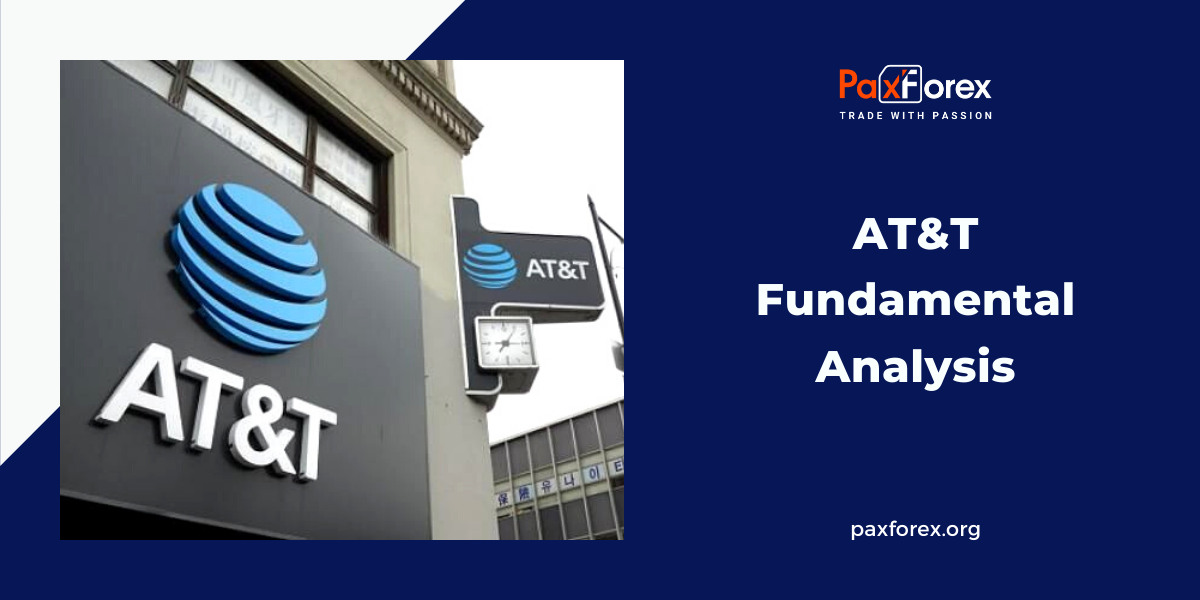
Source: PaxForex Premium Analytics Portal, Fundamental Insight
AT&T is starting its history with a clean slate. The sale of DirecTV and the spin-off of Warner Media's assets to Warner Bros. Discovery put the telecommunications giant on a more stable financial footing and allowed it to focus exclusively on 5G.
While this concentration should improve the company's ability to compete with Verizon and T-Mobile, it still faces serious challenges. For this reason, traders and those interested in becoming investors in AT&T need to understand the situation well and consider AT&T's strengths and weaknesses before making a decision.
In many ways, AT&T has positioned itself well. For all its focus on its television and media ventures, AT&T maintains a strong presence in wireless communications.
Until five years ago, AT&T had about 33 percent of the wireless market. Still, the company made strides when it began offering unlimited calling plans. That market share has grown to about 45%, making it the industry leader.
Moreover, because of the high cost of building nationwide wireless networks, the company is unlikely to face serious competition except for Verizon and T-Mobile. Given the importance of wireless services in today's world, the company should retain this customer base as long as it keeps up with the technology. And since investors can buy this reliable revenue stream at about 7 times earnings, it probably makes the stock more attractive.
This low valuation will allow investors to get $1.11 per share in annual dividend income. At current prices, this would provide shareholders with a yield just above 6%. That's more than three times the current yield of the S&P 500, which is about 1.82%. For the first nine months of 2022, the dividend cost the company about $7.8 billion. But given its free cash flow of $8 billion over that period, AT&T can afford that expense.
Unfortunately, the dividend is also a negative for AT&T. In addition to free cash flow barely covering payouts, investors are still experiencing dividend cuts that have deprived the company of its 35-year streak of annual dividend increases. This contrasts with Verizon, which offers a 7% yield and a 16-year streak of annual dividend increases.
Investors should also keep in mind that dividend stocks like AT&T are not required to pay a dividend. Because the built-in expectation of a payout increase has disappeared, AT&T can reduce or eliminate the payout altogether.
This is not such a far-fetched scenario. The $40 billion payout from Warner Bros. Discovery helped reduce the debt. Still, the total debt is more than $133 billion. That's a heavy burden, given that the company's book value -- the value after deducting liabilities from assets -- is about $140 billion. And given rising interest rates, refinancing that debt over time at higher rates will make it even worse.
Dividends and debt are just some of AT&T's financial problems. Building and maintaining wireless networks is expensive. Capital expenditures cost AT&T more than $15 billion in the first three quarters of 2022, a 28 percent increase over the same period last year.
In addition, T-Mobile, which once competed mostly on price, has improved the quality of its network in the 5G era. This threat is likely to limit revenue growth and could force increased capital spending to maintain market leadership.
Investors should probably avoid AT&T stock. Admittedly, its valuation is low and its competitive position in the wireless market should keep the company relatively stable.
However, AT&T is more likely to cut its dividend than Verizon, making it a risky proposition for earnings and giving Verizon an edge among high-dividend stocks. Moreover, the heavy debt burden and growing competition will limit revenue growth and keep costs high. Such conditions would likely deprive AT&T of a catalyst that could drive the stock higher.
As long as the price is above 18.00, follow the recommendations below:
- Time frame: D1
- Recommendation: long position
- Entry point: 18.27
- Take Profit 1: 19.50
- Take Profit 2: 21.00
Alternative scenario:
If the level of 18.00 is broken-down, follow the recommendations below:
- Time frame: D1
- Recommendation: short position
- Entry point: 18.00
- Take Profit 1: 17.00
- Take Profit 2: 16.00













